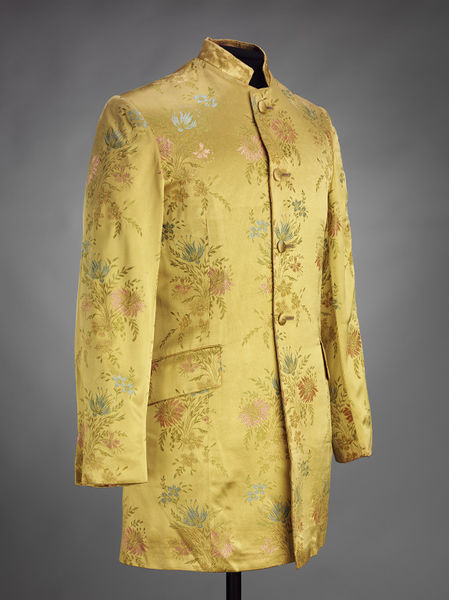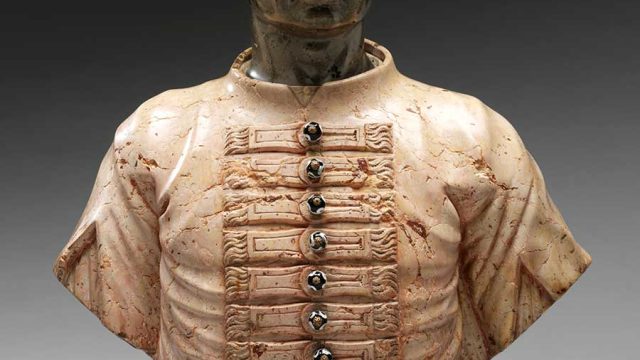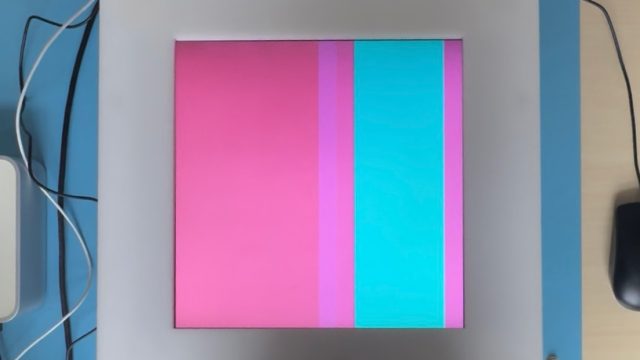According to “The Twelve Days of Christmas,”
On the tenth day of Christmas, my true love sent to me,
Ten lords a-leaping,
Nine ladies dancing,
Eight maids a-milking,
Seven swans a-swimming,
Six geese a-laying,
Five gold rings,
Four calling birds,
Three French hens,
Two turtle doves,
And a partridge in a pear tree.
The jacket pictured below was made by a British menswear company called Lord John in 1967.

This garment is a contrast to the jackets most men were typically wearing in Britain earlier in the twentieth century. These jackets had been characterised by simple, dark, matte fabrics and turndown collars and lapels. Lord John chose a standing collar and a synthetic brocade material which resembles lustrous silk. The fabric has a yellow ground and a floral design in blue, pink, and green. The jacket also stands out from equivalents commonly worn in Britain earlier in the century due to its long line of self-covered buttons and long line and more fitted cut.
Jackets of this kind—tailored, hip-length, with standing collars and long plackets of buttons, and often carried out in colourful and/or patterned fabrics—were widely called ‘Nehru jackets.’ The term refers to Jawaharlal Nehru, Prime Minister of India from 1947 to 1964. Nehru wore the archkan, a knee length coat, and the more informal bundi waistcoat, both of which feature standing collars and long button plackets.
This Lord John jacket may stand out from what many men had typically been wearing in Britain, but it’s fairly typical of this era of British history.
In 1960s Britain a significant proportion of teenagers and young adults were spending a considerable amount of money on dress, due, often, to factors such as wage increases. These customers were often drawn to variety and garments suggesting rebellion against mainstream 1950s British fashions and lifestyles, commonly viewed as restrictive by teenagers and young adults. Relatedly, a wide range of fashions gained popularity around the 1960s. Many of these styles were available at relatively affordable prices and markedly different to the clothes widely worn in Britain during the previous decades. Examples popular with many young women included mini (rather than below the knee) skirts and dresses, and plastic boots. Fashions adopted by numerous young men included ‘Nehru jackets’ available in a range of fabrics and psychedelic shirts. Similar developments took place at around the same time in other parts of the world including the United States.
London played a key role in this sartorial rebellion, which comprised of various branches. It was here, on Soho’s happening Carnaby Street, that Lord John opened its first shop in 1963. Brother David, Harold, and Warren Gold established the company. The brand itself became central to the revolution, going on to become particularly strongly associated with what was termed the ‘Peacock Revolution’—a phrase used to describe the exuberant, bold approach to dress embraced by many men from part way through the 1960s into the 1970s. The company ran into trouble when influential designer John Stephen, known as ‘The King of Carnaby Street,’ sued Lord John for passing off. Nevertheless, Lord John thrived in 1960s and early 1970s Britain.
If you’re interested in making an appointment to view textiles and fashion objects at the Clothworkers’ Centre, please email clothworkers@vam.ac.uk.
This post was edited by the author on 11 March 2021 as part of work on sensitive terminology and topics. Additional edits were made at the same time to further improve the post.


